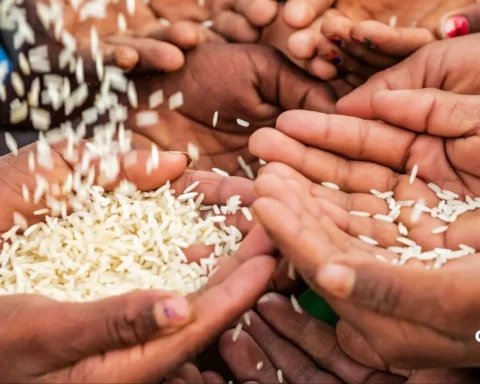The Girmitiya system was a 19th-century Indian indentured labor system, which entailed the shipping of more than 1.6 million Indian workers to European colonies to substitute slave labor following abolition. These laborers were called Girmitiyas, and they were enticed with false hopes of improved life and salary, but were subjected to abhorrent exploitation and poor living conditions in foreign countries. This system had a profound influence on the Indian diaspora and the socio-cultural landscape of countries such as Mauritius, Fiji, Trinidad and Tobago, and Guyana.
Table of Contents
Origin of the Girmitiya System
The Girmitiya system was established following the end of slavery in the early 19th century, which led to a dire shortage of labor in the British and other European colonies that relied heavily on plantations, particularly those involved in sugar production. Colonies such as Mauritius, Fiji, Trinidad, and Guyana had to rely on imported Indian workers to replace the shortfall. The British and other colonial authorities assured these workers of better living conditions and handsome salaries and convinced many to enter into contracts, which were locally referred to as girmits after the English word agreement. These treaties promised a 5-year work term abroad. (Source)
The system obliged the Indian workers legally to work long distances without necessarily knowing the exploitations that awaited them. Recruitme agents actively sought laborers in Indian provinces like Bihar or Uttar Pradesh. The earliest vessel to carry indentured labourers was around 1830, and by 1838, more than 25,000 had been exported, although the figures continued to rise as other European nations abolished slavery.

Life and Passage of Girmitiya Labourers
Indian emigrants under the Girmitiya system signed 5-year contracts that guaranteed them wages (at least 8 rupees per month) and passage, but the voyage and conditions were inhumane. Leaving particularly Madras and Calcutta, workers lived in overcrowded ships, had poor sanitation, and limited food and water supplies. Sicknesses like cholera and dysentery were epidemic.
Upon arrival, the suffering was further marked by low or late wages, inferior living conditions known as slave barracks, and harsh punishment for any form of perceived disobedience. Most of them were refused entry back to India after the work was finished, and the authorities began enforcing measures to prevent the workers from leaving, assigning them the wrong kind of land or compelling families to remain. The Indian government also lost repatriation rights when they were unused within 6 months of the contract expiry.
Impact and Legacy of the Girmitiya System
The Girmitiya system had a significant influence on the lives of millions of people and transformed the demographic and cultural landscape of a number of countries. The Indian migrants and migrant descendants constitute majorities in Mauritius, Guyana, Trinidad and Tobago, and Suriname, influencing the cultural mosaics with festivals, cuisine, music, and languages like Hindi, Bhojpuri, and Tamil. The system brought about resilience to the laborers who maintained the Indian traditions, but adjusted to the new environments.
The system also established inequalities economically because landowners were making a lot of money through cheap labor, yet workers were still poor. Girmitiya descendants occupy important positions in politics and socially today, promoting their culture, and the relationship between India and the diaspora countries is reinforced. India identifies them as “Rashtradoots” who are envoys of their culture, and offers Overseas Citizen of India (OCI) cards to facilitate more contact.
Ban and Reinstatement
The system was briefly banned in 1839 following protests and fines, but in 1842 in Mauritius and 1845 in the Caribbean colonies, under colonial pressure, it was reinstated. Gradual reforms followed, and included international criticism and Indian reformer protests, such as those led by Gandhi, which led to a ban on women emigrating without family, a parliamentary resolution to abolish indenture by 1917, and ultimately a dismantling of the system by 1921 in the British colonies. (Source)
Conclusion
The Girmitiya system is a vivid reminder of how the colonial exploitation of the Indian laborers of the 19th century was carried out, with millions of people being exploited. Although there were fake promises of wealth, these workers suffered a lot, and they were subjected to inhuman working and living conditions, discrimination, and curfews. However, they have left a legacy in the vibrant cultural identities and socio-political input of their descendants across the world. Girmitiyas is a story of endurance, struggle, and ultimate empowerment, a manifestation of the human spirit and fight in the face of challenges.

FAQs
What is the meaning of Girmitiya labour in the Girmitiya system?
The Girmitiya labour in the Girmitiya system can be defined as Indian indentured labour that signed a contract (girmit) to work a specified time abroad, mostly on colonial plantations in the 19th century.
Who are called indentured labourers in the Girmitiya system?
Girmitiya system of indentured workers who signed legal contracts to serve a specified period in exchange for passage, accommodation, and wages. They are unlike slaves as they are given rights and service for a fixed term.
What is the difference between slavery and indentured labour in the context of the Girmitiya system?
Slavery means property and a lifetime of servitude with no rights, whereas indentured labour in the Girmitiya system is temporary, with a fixed term, and under law, but terms were frequently abusive and exploitative.










[…] African food history reflects the nation's remarkable diversity, history, and the unifying power of shared meals. It celebrates flavours, ingredients, and traditions that […]
[…] social and cultural issues, the lessons ingrained in these influential works remind us of the lasting impact that thoughtful and courageous writing can have on building a better […]